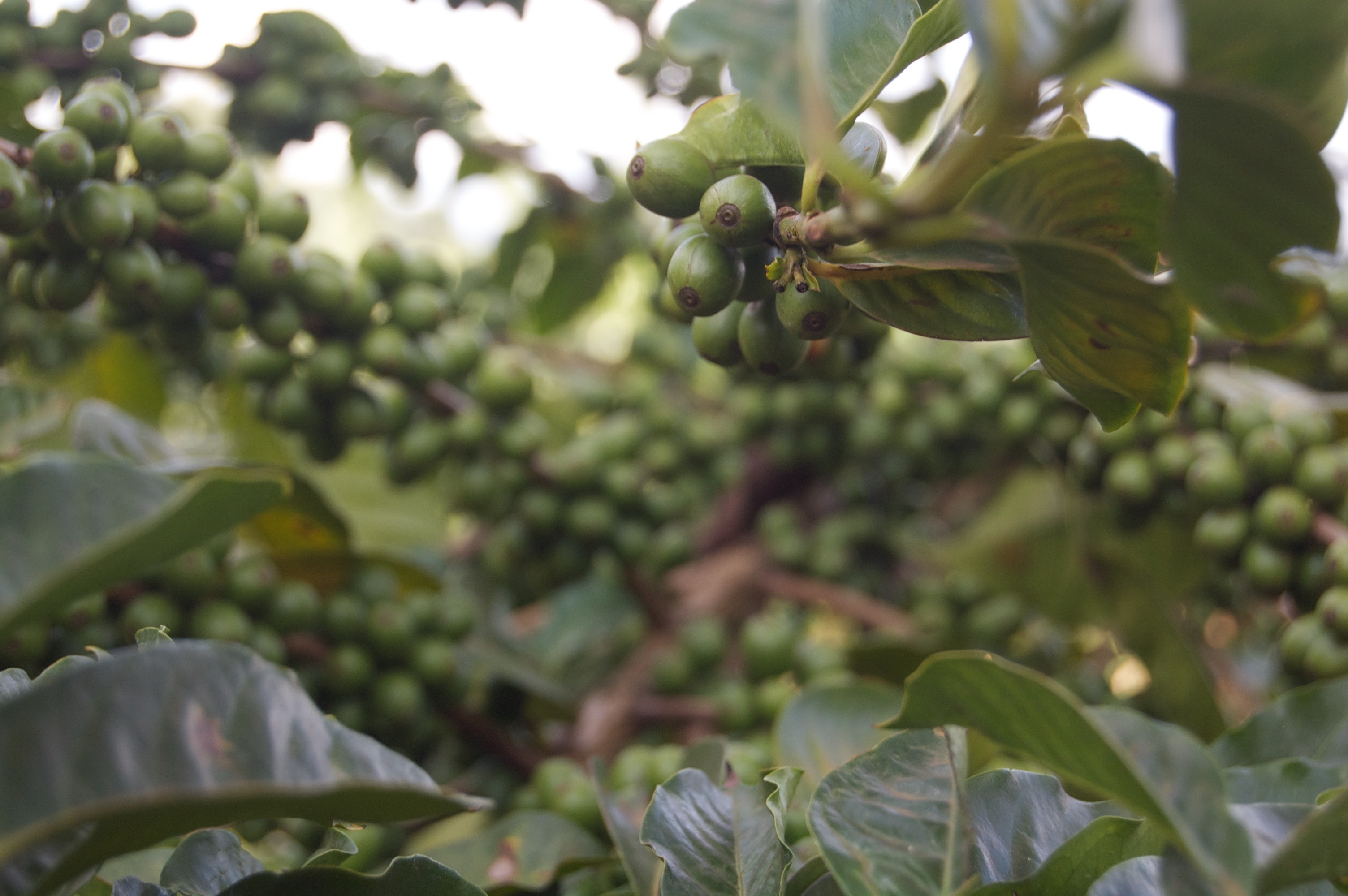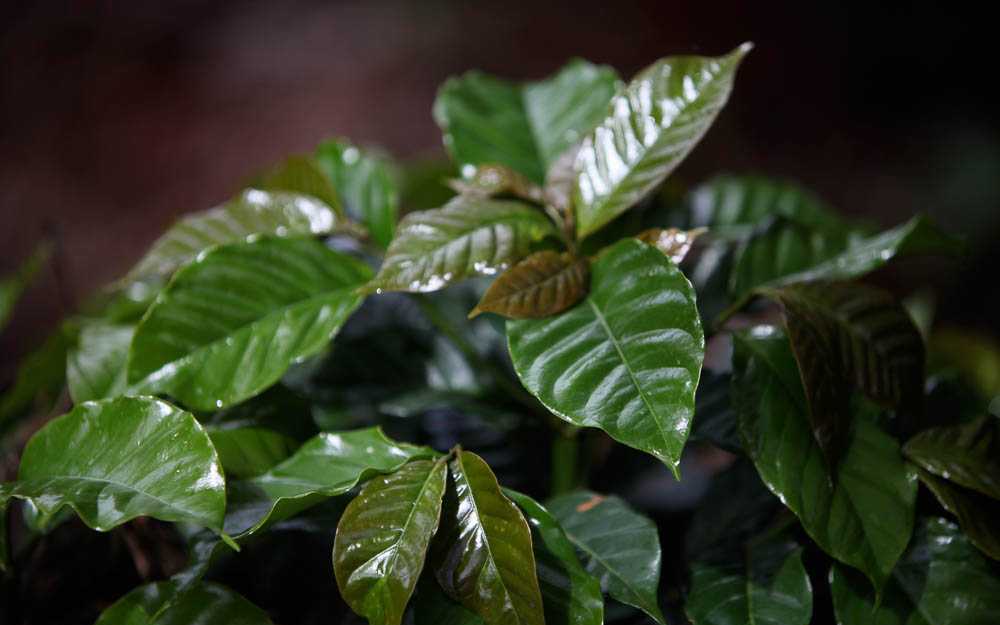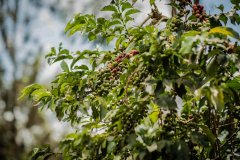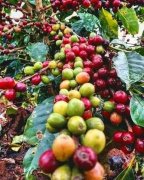Flavor and taste characteristics of historical stories of Kenyan coffee varieties SL28 and SL34 Rui Lu 11 coffee beans
Today, the editor introduces the unique Kenyan coffee varieties SL28 and SL34, both of which are cultivated from Scott Laboratory (SL). They are selected varieties of a single variety after many times of cultivation, referred to as SL28 and SL34. It should be noted that the laboratory selected 42 tree species from different producing areas. SI is only the prefix name of the R & D series and does not mean that they are all the same variety.
SL28:

It is one of the most famous and popular coffee varieties in Africa-released by the authorities in the 1930s, first planted in Bonia, then spread to Uganda in Africa, and now has attracted a lot of attention in Central America. This variety is suitable for middle and high altitude areas and has the ability to resist drought, but it is still susceptible to major coffee diseases.
The SL28 variety has three main features:
There are also local SL28 trees in Kenya, which are more than 60 years old and still bear fruit for harvest. SL28 is a multivariate study on the yield, quality, drought resistance and disease resistance of coffee species from dozens of producing areas in Scott laboratory. SL28 is selected from the single-tree species of star-resistant species, and then improved continuously. According to the literature, in 1931, A.D.Trench, a researcher at Scott Experimental Treasures, went to Tanganyika (now Tanzania) to do field research and noticed that a coffee variety grown in Moduli seemed to be tolerant to drought, disease and pests. Trench collected the seed and brought it back to Scott Lab after many and extensive breeding studies, the laboratory finally launched the offspring of the variety SL28 in the Murdoch area. SL28 is considered to be a single variety developed by Scott laboratory during the period of research and breeding in that year, and it is not transmitted by bourbon germline mutation or mixed breeding. In recent years, genetic studies have confirmed that SL28 belongs to the bourbon gene group.
SL 34:

Another common variety of Kenyan beans is SL34, which also comes from the same laboratory. In the late 1930s, Scott's laboratory selected a single tree species for a series of cultivation on a private estate in Kenya. Between 1935 and 1939, Scott Lab conducted a single breed breeding program based on the initials "SL" of the two English words in its name. Because Scott Lab selected one of the coffee trees from Loresho Estate in the Loresho Estate estate in Kabete, Kenya, as a variety source for the SL34 series. Because Scott Lab cooperates with a private estate, and the tree belongs to private property, it is labeled as a "French Mission". Legend has it that Spiritans French missionaries established a missionary in Bura on the Tailta Hills in Kenya in 1893 and planted their bourbon seeds from the island of Reunion in nearby farms. In 1899, Bra's seedlings were taken to another French missionary mission in St. Austin (near Nairobi), where seeds were distributed to residents willing to grow coffee. Therefore, the bourbon species is called the inner French missionary native coffee. French missionaries spread the bourbon species of Reunion, so French missionaries "has become another synonym for bourbon." Because the tree planted by SL34 is marked "French Mission", people think that SL34 is a bourbon species. But according to the World Coffee Research Organization, SL34 is actually closer to the iron pickup after genetic testing. So the story of French missionaries and SL34 may not be true. When SL34 and SL28 are measured in the same place in the actual cup, it is easy to detect that the acidity of SL34 is mild, while that of SL28 is rich and bright.
Ruiru 11, Batien:
Since the export of coffee from Kenya, SL28 and SL34 have accounted for more than 90% of the cultivated varieties for a long time. With the passage of time and the attack of the disease, the Kenyan authorities continued to find a solution to the berry disease of coffee through the research, selection and breeding of various varieties. Other varieties were also introduced under the requirements of drought resistance, stable flavor quality, resistance to leaf rust and pink scale and other diseases and insect pests, including the Jamaican Blue Mountain introduced in 1931 and later K7 and K20.
Planted in Meilu District in 1934, the former was resistant to leaf rust, but the flavor was poor, while the latter was prone to coffee beetle disease. So in 1986, the laboratory released Ruilu 11, which is resistant to diseases such as coffee berry disease and leaf rust, but it still has the Robusta gene, resulting in a much lower flavor quality than the SL variety. The latest variety released after that retains the two major features of large bean shape and high production capacity, and its flavor is much better than that of Ruilu 11.
Important Notice :
前街咖啡 FrontStreet Coffee has moved to new addredd:
FrontStreet Coffee Address: 315,Donghua East Road,GuangZhou
Tel:020 38364473
- Prev

Quality Standard and Flavor and taste characteristics of Kenyan Coffee Raw Bean Cup | main varieties of Kenyan Coffee
Kenyan raw beans are briefly introduced at http://bak.gafei.com/kafeidou/20210707142919.html. Today, the editor focuses on cooked beans, how he cup tests and what the criteria are. Basically, Kenyan coffee will be sent to the Kenya Coffee Bureau (coffee board of Kenya,CBK) established by the government.
- Next

Kenyan K72 double washing coffee bean flavor characteristics Kenyan coffee flavor
The clean and bright style of Kenyan coffee beans has a lot to do with his unique way of handling coffee. Today, the editor will take you to learn about the double fermentation treatment of Kenyan coffee. Kenyan coffee is famous for its multiple washing. International buyers often require washing: the main producing area to add honey treatment, Japan.
Related
- Detailed explanation of Jadeite planting Land in Panamanian Jadeite Manor introduction to the grading system of Jadeite competitive bidding, Red bid, Green bid and Rose Summer
- Story of Coffee planting in Brenka region of Costa Rica Stonehenge Manor anaerobic heavy honey treatment of flavor mouth
- What's on the barrel of Blue Mountain Coffee beans?
- Can American coffee also pull flowers? How to use hot American style to pull out a good-looking pattern?
- Can you make a cold extract with coffee beans? What is the right proportion for cold-extracted coffee formula?
- Indonesian PWN Gold Mandrine Coffee Origin Features Flavor How to Chong? Mandolin coffee is American.
- A brief introduction to the flavor characteristics of Brazilian yellow bourbon coffee beans
- What is the effect of different water quality on the flavor of cold-extracted coffee? What kind of water is best for brewing coffee?
- Why do you think of Rose Summer whenever you mention Panamanian coffee?
- Introduction to the characteristics of authentic blue mountain coffee bean producing areas? What is the CIB Coffee Authority in Jamaica?

